Excerpts from Jim Conrad's
Naturalist Newsletter
from the December 21, 2018 Newsletter issued from Rancho Regenesis in the woods ±4kms west of Ek Balam Ruins; elevation ~40m (~130 ft), N20.876°, W88.170°; north-central Yucatán, MÉXICO
"RED CEDAR"
In a fencerow along the dirt trail to the pigpen, a small tree with pinnately compound leaves like a northern walnut tree, caught my eye with its several green, mothball-size fruits, as shown below:
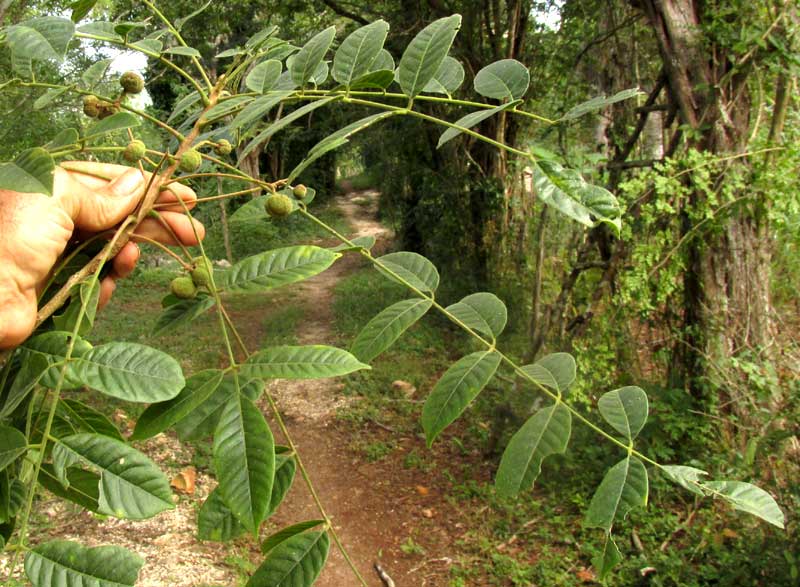
The immature fruits were unusual in that they clustered singly in small groups at the ends of long, slender, woody stems, or peduncles, as shown below:

Viewed up close, the fruit's oddly bumpy husk proves to be covered with short, velvety hair, and most fruits were clearly divided into three sections, or carpels, like the one shown below:
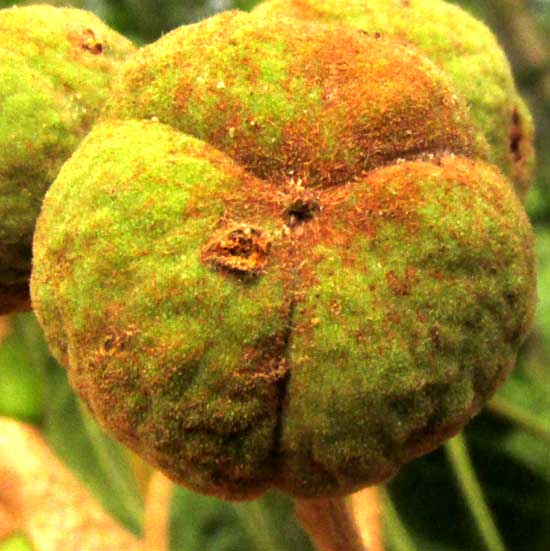
When the immature husk was partially removed, a nice surprise was found inside, shown below:

So this is one of those fruits that when mature splits into three sections revealing seeds with bright red coats inviting birds and other animals to come eat, in the hope that the seeds will be dispersed into new territory.
These were all fine field marks that probably would make identification easy. Still a feature of the twigs was so pronounced that it deserved to be documented, so below you can see a twig tip:
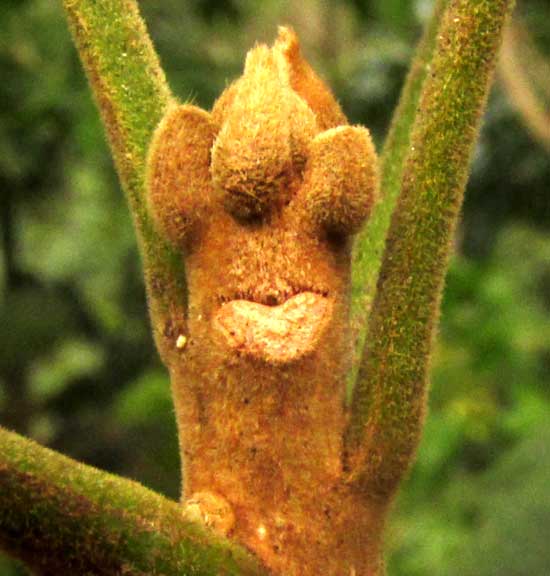
Most tropical trees don't display such prominent buds and leafscars, and the reddish-brown covering of hairs also is special. The well formed buds indicate that the species drops its leaves about now, during the early dry season, and new leaves, flowers and stems will emerge from the buds once the rains return in June or thereabouts. Unlike most Temperate Zone trees, the buds don't bear scales -- are "naked" -- surely because here we don't have freezing temperatures to deal with.
The combination of a tree with pinnately compound leaves producing capsular fruits bearing three seeds narrowed the possible plant families down to a small handful, among which was the Mahogany Family, the Meliaceae, and that seemed like the best bet. Checking the list of members of that family occurring in the Yucatan quickly brought forth TRICHILIA HIRTA, a good old no-nonsense Linnaeus name. The species name hirta refers to the hairiness.
The only English name I can find for it is "Red Cedar," which seems completely inappropriate since it's not a cedar, nor is there much red about it. But that's the way with common names.
Linnaeus, the Swedish "Father of Botany" who back in the 1700s originated the practice of designating organisms by their genus and species name, the "binomial nomenclature" system, probably knew about Trichilia hirta because early plant explorers in the American tropics found it to be a well known tree here. The species is distributed from central Mexico and the Caribbean south through central America to Paraguay and Brazil in South America.
Belonging to the Mahogany Family, it's not surprising that its wood is exceptionally fine for woodworking, but in some places it's highly regarded because its young leaves when strewn on dirt floors and hut entrances repel fleas, lice and other such pests. The Maya I talk to don't know about that use, though.
Traditionally, leaf juice has been used medicinally, rubbing it onto arms and legs to relieve convulsions. The root is a strong purgative. In Cuba the leaves are boiled in water to prepare baths to cure ulcers. A handful of young sprouts boiled in water provides a tea of which a small cup should be taken every three hours for asthma, bronchitis and bronchial pneumonia.
Issued May 4, 2020 from Tepakán, Yucatán, MÉXICO
FALLEN FLOWER
While I worked beside the rancho's eastern stone wall, a thumbnail-size flower fell onto the wall's top, shown below.
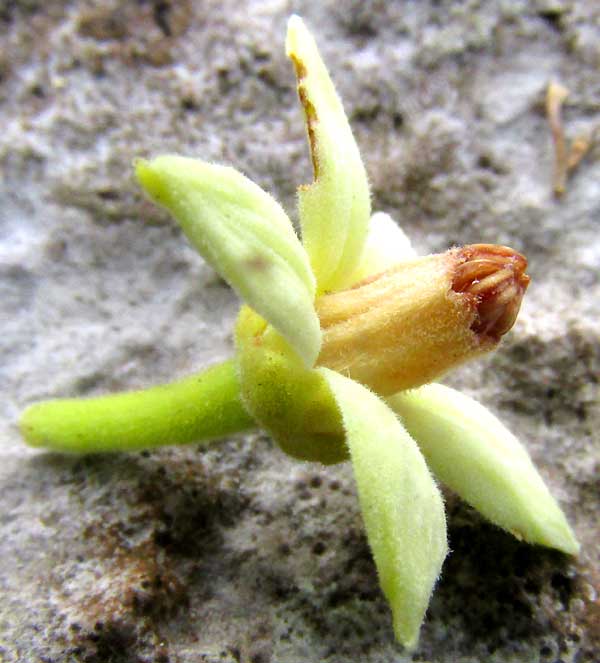
This flower's first notable feature is the cylindrical item arising from the blossom's center, tipped with brown things, which are anthers, from which pollen is released. Below each anther is a kind of ridge, which is the anther's "stem," or filament. What's special is that the filaments are joined by their sides to form a cylinder. In most flowers, filaments are like separate matchsticks. In the southern US the Chinaberry tree from Malaya produces flowers structured like this, though its blossoms are purplish and the filament cylinder longer and narrower. Chinaberries belong to the Mahogany Family and a very common tree in our woods in that family is the famous Spanish Cedar, or Chakáh, but the Chakáh's filaments are separate. Still, our flower fell from a tree in that family, Trichilia hirta, whose treetop pinnately compound, young leaves are shown below:
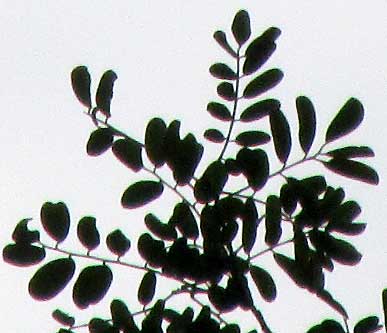
In the Yucatan Peninsula, CICY lists ten Trichilia species, of which Trichilia hirta is the only commonly collected one in the more arid northwestern corner. CICY documents flowering from April through August.